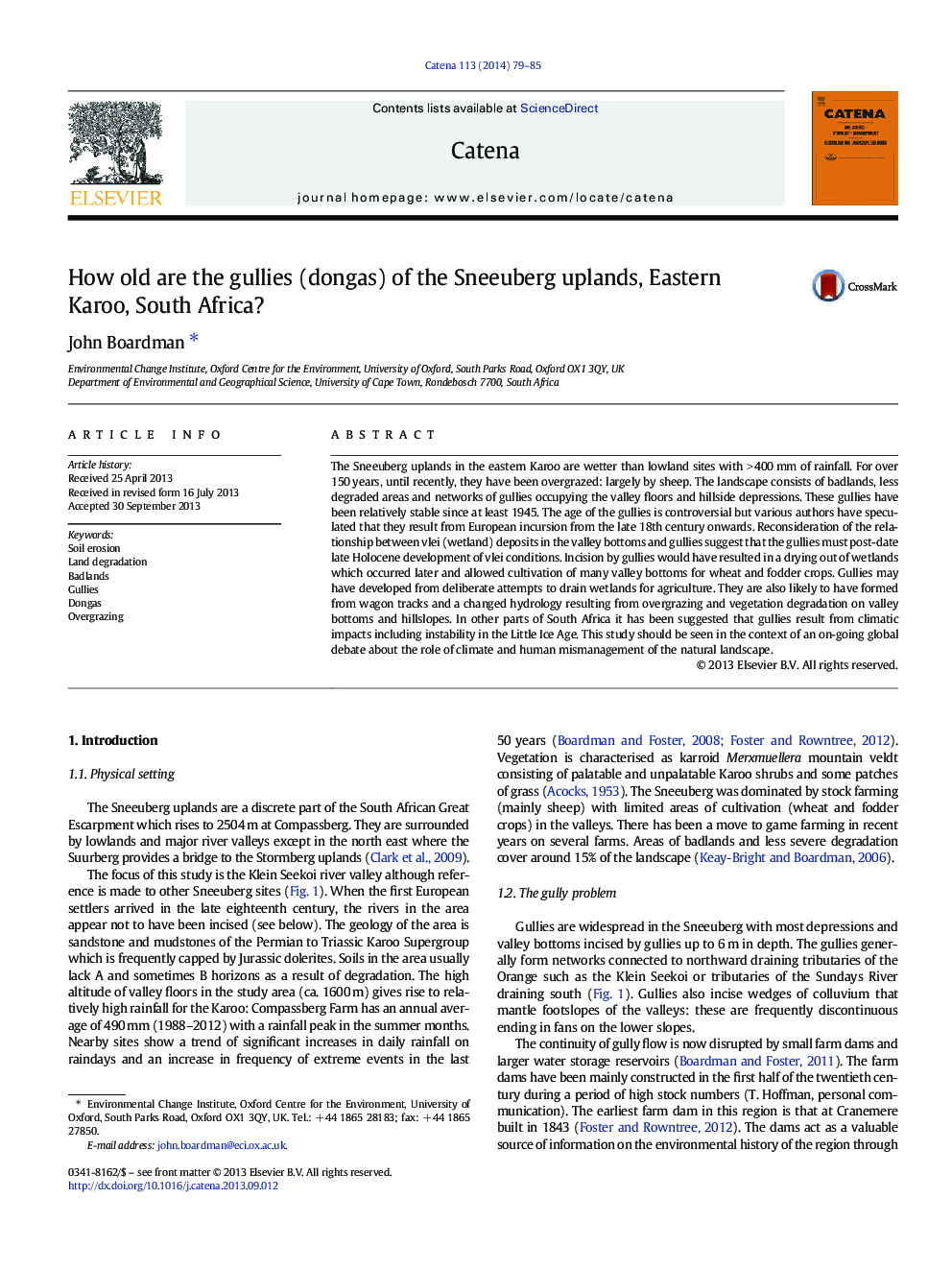| Article ID | Journal | Published Year | Pages | File Type |
|---|---|---|---|---|
| 4571514 | CATENA | 2014 | 7 Pages |
•I review evidence for age of gullies in the Sneeuberg uplands, South Africa.•Their formation is likely the result of human impact — overgrazing.•Gullies post-date phase of vlei (wetland) formation.•Little evidence of climate change impact on gully formation
The Sneeuberg uplands in the eastern Karoo are wetter than lowland sites with > 400 mm of rainfall. For over 150 years, until recently, they have been overgrazed: largely by sheep. The landscape consists of badlands, less degraded areas and networks of gullies occupying the valley floors and hillside depressions. These gullies have been relatively stable since at least 1945. The age of the gullies is controversial but various authors have speculated that they result from European incursion from the late 18th century onwards. Reconsideration of the relationship between vlei (wetland) deposits in the valley bottoms and gullies suggest that the gullies must post-date late Holocene development of vlei conditions. Incision by gullies would have resulted in a drying out of wetlands which occurred later and allowed cultivation of many valley bottoms for wheat and fodder crops. Gullies may have developed from deliberate attempts to drain wetlands for agriculture. They are also likely to have formed from wagon tracks and a changed hydrology resulting from overgrazing and vegetation degradation on valley bottoms and hillslopes. In other parts of South Africa it has been suggested that gullies result from climatic impacts including instability in the Little Ice Age. This study should be seen in the context of an on-going global debate about the role of climate and human mismanagement of the natural landscape.
